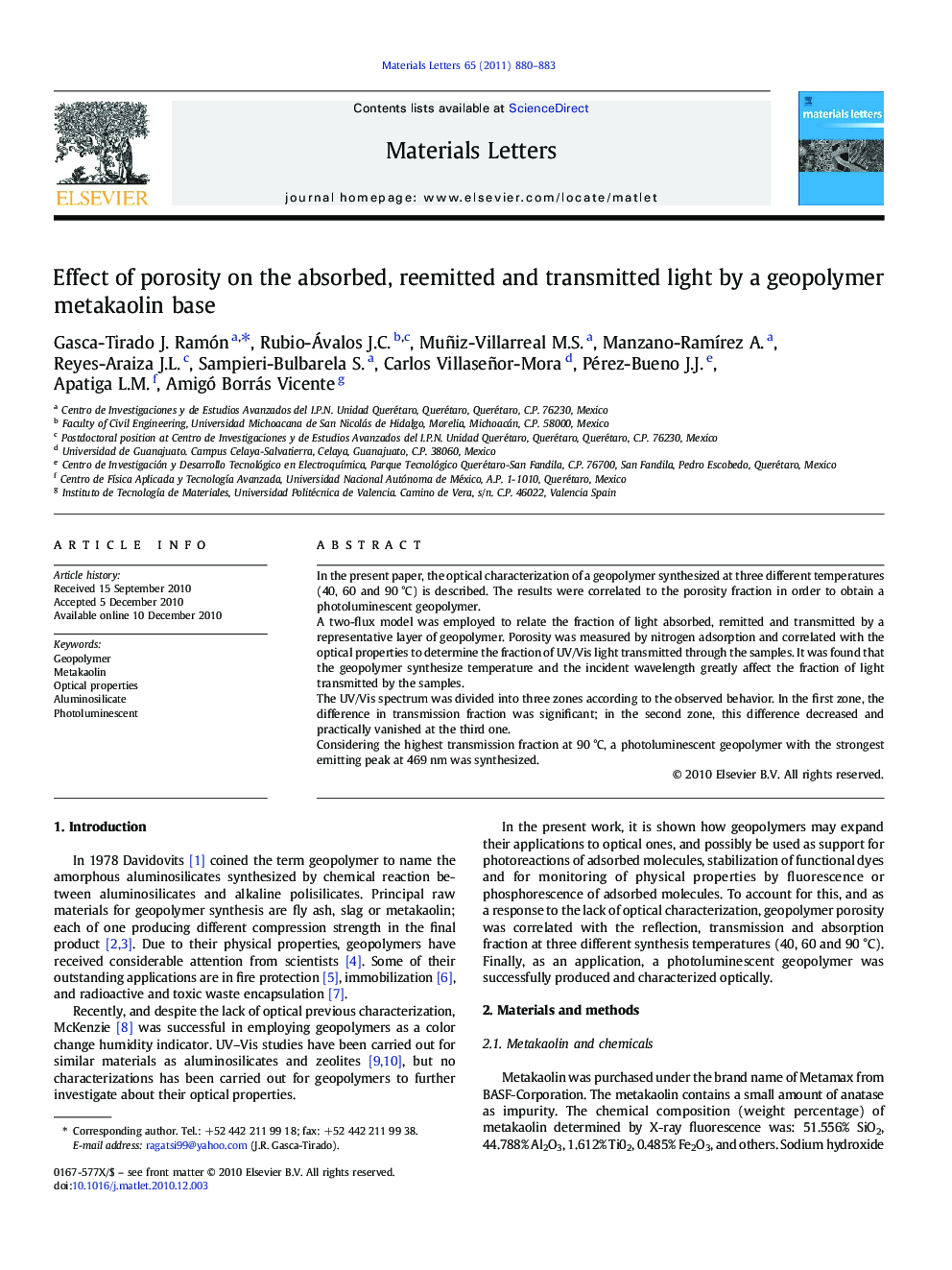| Article ID | Journal | Published Year | Pages | File Type |
|---|---|---|---|---|
| 1648176 | Materials Letters | 2011 | 4 Pages |
In the present paper, the optical characterization of a geopolymer synthesized at three different temperatures (40, 60 and 90 °C) is described. The results were correlated to the porosity fraction in order to obtain a photoluminescent geopolymer.A two-flux model was employed to relate the fraction of light absorbed, remitted and transmitted by a representative layer of geopolymer. Porosity was measured by nitrogen adsorption and correlated with the optical properties to determine the fraction of UV/Vis light transmitted through the samples. It was found that the geopolymer synthesize temperature and the incident wavelength greatly affect the fraction of light transmitted by the samples.The UV/Vis spectrum was divided into three zones according to the observed behavior. In the first zone, the difference in transmission fraction was significant; in the second zone, this difference decreased and practically vanished at the third one.Considering the highest transmission fraction at 90 °C, a photoluminescent geopolymer with the strongest emitting peak at 469 nm was synthesized.
